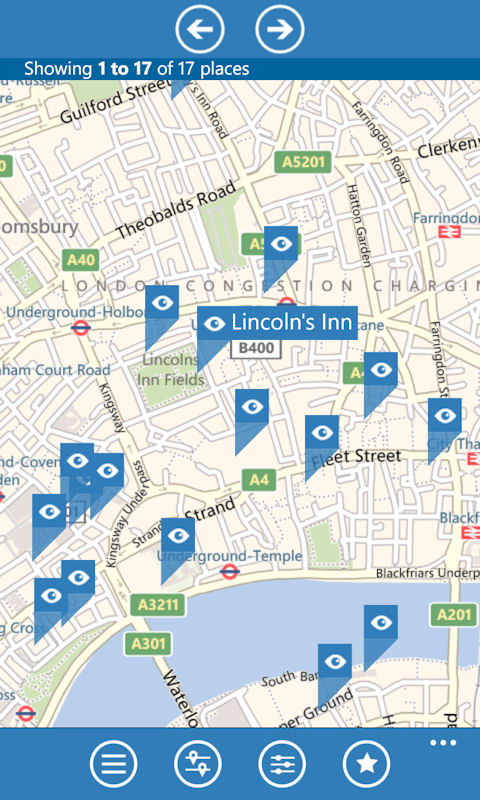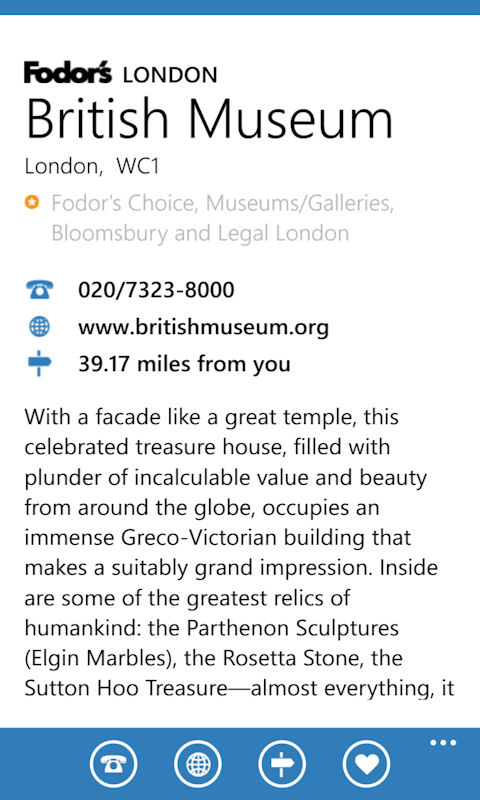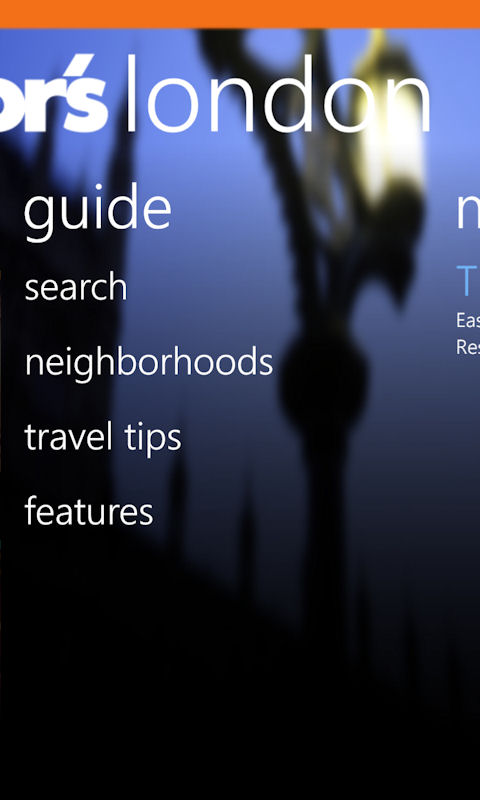The first page of the app's opening panorama is made up of tiles, each of which gives access to a certain type or category of content: Fodor's Choice (editor's picks of the best places in the city), Nearby (things close to your current location), sights (what to see), eat (where to eat), shop, arts (culture and theatre), night life (where to be seen), and stay (hotels and guest houses). Tapping on any of these tiles brings up a list of places that fits in that category. Swiping left, or right, from these list switches over to the next category.


List of places can be displayed on a map to give you a better idea about their geographic location, or filtered by category, which is useful when you're looking for a certain type of place (e.g. parks).
Each place listed in the guide book gets it own page, with a clear layout showing name, location, category, contact details, distance from current location and a text description. The toolbar offer options for calling the appropriate contact number, visiting the relevant website, getting directions from your current location (integrates with Maps app), and adding the place to your favourites list (a handy way to bookmark places for later reference).


On the second page of the opening panorama is a page headed "guide", which gives easy access to the search tool (free text search), and three additional content areas: neighbourhoods, travel tips and features. Neighbourhoods offers a text description of a city's major areas; travel tips offers advice on how to get around, tipping, safety, and much more; features offers a series of magazine articles around relevant topics (e.g. undiscovered London). These content features are now common to most guide books, but were originally pioneered by Fodor's in the 1930's, and the digital version of the content remains class-leading.


The third page of the opening panorama is headed "my favourites", which lists all the places and attractions specifically saved by the user. The last page, "extras", gives access to the settings, about screen, and, on Windows Phone 8, the ability to download maps for offline use (integrating with platform maps).
The Fodor's apps for Windows Phone have been well put together, doing a good job of providing fast and intuitive access to the content. They are respectful, but not slavishly devoted to, the Microsoft Design Language. Of course the real star of the show is the content on offer. A little more attention could have been paid to the formatting (e.g. extra paragraph breaks), and the guide could do with more multimedia (images, audio, video), but the overall quality is
Windows Phone Store description:
For the first time on Windows Phone, Fodor's Travel brings you the best of London.
- Quickly find expert reviews of restaurants, shops, sights, and hotels, thanks to our multiple sort and search options
- Explore by neighborhood or find what’s nearby with detailed interactive maps
- Jump to the best of the best with our exclusive Fodor’s Choice picks
- Keep track of all your favorites places
There are Fodor's travel guide apps for London, New York, Barcelona, Paris, Rome, and San Francisco. They can all be downloaded from the Windows Phone Marketplace for free.
